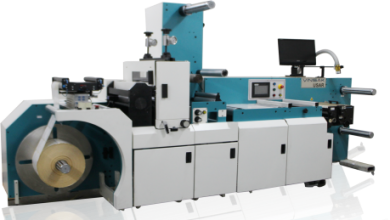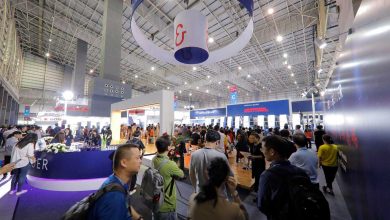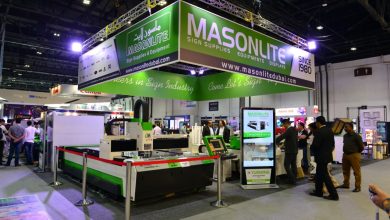Reading The Signs
Over the years I have attended several different printer expos in beautiful Istanbul, Turkey. But consistently the one which is the largest is Sign Istanbul. For 2013, Sign Istanbul is still the leader in size (number of exhibitors, number of exhibit halls, and number of attendees).
I spent four days at Sign Istanbul 2013, plus the afternoon of the set-up day (the day before the expo opens). The following article is a report on what the two of us from FLAAR Reports experienced, me and textile printer technical writer Maria Renee Ayau.
 Trade show organizers focus on brand names and distributors. I would suggest adding an additional educational focus on assisting print shop owners, managers, and printer operators to learn the entire workflow. So for 2014 there will be several new FLAAR Reports on workflow. I would like to initiate this theme here in ME Printer magazine.
Trade show organizers focus on brand names and distributors. I would suggest adding an additional educational focus on assisting print shop owners, managers, and printer operators to learn the entire workflow. So for 2014 there will be several new FLAAR Reports on workflow. I would like to initiate this theme here in ME Printer magazine.
Workflow means all the steps from conception of the sign through to cutting and finishing the sign after printing. So step by step workflow is everything. What we find is that some steps are better known than others: RIP software is better known than MIS software or colour management software. And lamination is better known than coating.
By pointing out the entire workflow steps we can encourage expo organizers to add booths to exhibit those aspects of the workflow which tend to be missing or at least weak even in major international expos in USA. Colour management tools, MIS software, primers (before printing) and coating equipment (for after printing) tend to be absent or at least not fully featured even in some large expos.
Yes, Drupa has all the products for each step, but Drupa is every four years. FESPA Digital in Germany and The Netherlands, ISA and SGIA in America, are also good at providing all needed tools for signage. Our goal at FLAAR is to suggest that all the products needed for these steps should also be included in the expos which are growing from being regional into now more international expos: Sign Istanbul for this part of the world, SGI (Sign Middle East) for the homeland of this ME Printer magazine, etc.
The present article is specifically about Sign Istanbul; but I will weave in concepts of workflow. The actual workflow list and description will be a separate article. So let’s look at each well-known aspect of the workflow, at Sign Istanbul.
Lots of after-market ink options
Ink chemistry is a key aspect of printers and printing. So it is essential that lots of ink options be available at a printer or signage expo.
There were more booths of more different brands of ink here at Sign Istanbul than many other expos. Some ink is branded with the original factory name but in Turkey most is rebranded by local distributors. Rebranding the ink is a common practice around the world, but in the long run you really need to know which factory is making the ink. This is why we like inks such as Sam Ink, made in Singapore. When you see these yellow packages you know precisely where and who makes the ink.
There are reliable ink manufacturers in Korea, Japan, and Taiwan, and increasingly good brands in China as well: we have visited the ink factory of Hongsam as one example. Plus ink is made in Turkey also. Many international brands were visible, but more and more are contract manufactured in China (even if the brand is European or North American or Japanese).
 RIP software visible and available
RIP software visible and available
ErgoSoft and Caldera were both quite visible. Wasatch and Onyx were not as visible.
MIS software would be available in the booth of Efi VUTEk (Fleksmedia is the primary resource for Turkey). MIS software is also available from Esko (Kongsberg is their cutter). Several RIP brands have recently added their versions of MIS as well.
Abundant options for media
Whereas most ink was rebranded, most media was original brand, though in reality even the big name brands have some substrates made for them in China, or the substrate made in one location and the coating applied elsewhere. If you are looking for the primary brands of media and printable substrates, Sign Istanbul offers effectively everything. The only substrate that I could not find were the various name brands for honeycomb sandwich board. But honeycomb material was being cut by some of the top three big name brands of digital flatbed cutters.
There were plenty of brands of foam board, lots of aluminum composite material, canvas, PVC, and printable fabrics. Indeed there are more booths for Aluminum Composite Material at Sign Istanbul than at most printer expos in North America. Frankly the number of distributors of major brand names (ORACAL, 3M, AVERY, etc.) is extensive. Some media brands have up to four distributors.
So for ink and for media, this is definitely an international expo of high status.
Textile inks and textile printers
In the past I have enjoyed seeing ATPColour; this year the primary brand of 3.2m textile printers was MTEX via FutureDigital booth. The PIMMS and other booths had plenty of Mimaki textile printers of all sizes.
For printing on transfer paper Mutoh, Roland, and even Epson can work. Several Chinese textile printers were available, including a nice example from Century Star (in the Fleksmedia booth). Eurotech offered a sticky-belt textile printer.
Eco-solvent, Mild-solvent, full-solvent
All major brands of all flavors of solvent printers were present: Mimaki, Mutoh, Roland, Seiko, and many brands from China. You could find full-solvent ink (Chinese brands), mile-solvent ink (Seiko II), and eco-solvent inks (Seiko II again, plus all the other Japanese brands, plus Chinese brands with DX printheads).
Mimaki had at least three dealers, starting with master distributor PIMMS. Mutoh had at least two major distributors, Prodigital and Folpa. Roland had at least two major distributors, an official Roland booth and Sahin. Seiko was in the ample booth of InkaTeknik.
A good example of the diverse range of Chinese printer brands would be the booth of Superwide. Gongzheng was in the booth of Prodigital. In general there were more brands of Chinese-made solvent printers at Sign Istanbul than any other printer or signage expo in all of Europe.
UV-Cured Printers
Plenty of brands were exhibited; so if there was another brand that you could not find, no problem because the choice of other brands was plenty. Efi VUTEk, Dilli (Prodigital) HP Scitex, Durst, JETRIX (InkaTeknik), Mimaki (PIMMS and associated booths), Flora (in booth of Fleksmedia), Anderson (DPC, booth of partner, also named Istanbul), plus there was LIYU, two SkyJet (Sky Air-Ship), JHF (Sahin), Eurotech and other brands.
Any brand which skipped Sign Istanbul (such as Agfa, Canon Océ, and Fujifilm) missed considerable opportunities. All the major distributors which were present, and with sizeable booths, had plenty of UV-cured printers on display. The largest selection of UV-cured printers was in the booth of Fleksmedia: both Flora dedicated flatbed, and three options from Efi, VUTEk and R-series.
Thus you had UV-cured printers from North America, Europe, Korea, Taiwan, Japan, and China. This is an international diversity of brands which is important to note. Print shop owners are best served if they can see what the options are. Here is precisely the advantage of a trade show over an Open House. In an Open House you experience one brand nicely. In an expo you see diversity in size, shape, ink chemistry, all under one roof.
 SUV (Solvent UV)
SUV (Solvent UV)
SUV is now readily available from Mimaki. In Europe and USA there are alternative brands of printers with comparable SUV ink. But none were yet displayed at Sign Istanbul. However I would expect to see additional brands of printers with SUV ink in 2014. SUV means solvent UV, a remarkable ink chemistry with the brilliant colour pop that traditional UV can rarely achieve.
Plus SUV has no sandy surface texture: SUV is smooth and frankly gorgeous. The advent of SUV demonstrates the innovative nature of Mimaki. They also have a latex ink alternative.
Latex ink
On the subject of latex ink, there is now a third generation latex ink available in the HP Latex 3000 printer. All other earlier (older) models got their names changed: HP Designjet L26500 is now HP Latex 260, but it’s the identical old printer with a new plastic name plate. The real innovation is available exclusively in the “HP Scitex” version, the HP Latex 3000.
For any new ink, especially one as innovative as this iteration, I would want to inspect a Latex 3000 printer which had already been functioning for several months out in the real world. I have long ago learned that what you see in a demo room is not what you get in your own print shop.
The former AquaJet textile printer is the best example; it looked great in a demo center. But out in the real world it had printhead issues, ink delivery speed issues, etc. None of these issues were noticeable in the demo room. But the issues were very real, to the point that this printer technology has now been cancelled and replaced by a completely different textile printer from a completely different source.
Laminators were in many booths
Most of the laminators which I saw were made in China, but there were probably some brands from other factories as well. One aspect of the workflow which hopefully will be enhanced in 2014 is coaters. A coater is for creating surface effects more than protective lamination.
Most noticeable were CNC routers and flatbed cutters
Every kind of cutter was visible everywhere: CNC routers from Taiwan, Mainland China, and several brands made in Turkey. CO2 laser engravers of all sizes, shapes and brands. Plus for flatbed XY digital cutters you could find all major brands: Zund, Kongsberg, and Aristo.
What was new?
A textile printer model from D.G.I. was one I have not noticed earlier in the year. The printhead carriage had enclosures at each end, about the size of a curing lamp enclosure. So I was very curious why these enclosures existed at each end of the carriage.
UV-curing inks can indeed be used to print on some fabrics; in the five times I have been in the Durst factory in Brixen, Italy, they frequently print on fabrics in their demo room (with UV-cured ink; yes they also now have a textile printer, but my visits were before their textile printer existed).
But if you really want a good hand (a good natural feel when you touch it), you need your fabric printed with a sublimation ink, reactive dye, or acid dye.
We asked a person in the booth and they said these enclosures were for sensors, not for curing lamps. The sensors were to detect if the printhead would scrape the edge of surface of the media. Whether this particular D.G.I. printer has been shown before, I am not sure, but this is the first time I noticed it.
The other “new product” was a printer with MEMS printhead technology from Memjet. This machine is available from Gongzheng, the PRO-A1060C, 42 inch model, named Axia for the market in Turkey. Although this printer had been shown once before, I found that Sign Istanbul was the best place to see it, since it is more efficient to attend really large international expos. If you go to a small expo, such as VISCOM, these are great for the local French, Italian, or German print shops, but you do not see as many brands as you would at a fully international expo such as Sign Istanbul.
We are doing dedicated research on all Memjet printers and will present an article on this technology in 2014.
 Toner-based printers
Toner-based printers
This article is primarily about wide-format inkjet printers. But toner printers are also crucial for today’s print shops. Thus it was good to see an HP Indigo printer in the booth of Yatay. And there were two Xerox office style printers in the Xerox + Epson booth (LIDYA). I had print samples from the Indigo and from one of the Xerox printers. I look forward to writing a separate article on digital presses and office printers in the future. So it was nice to see at least two brands at Sign Istanbul 2013.
Sign Istanbul offers past, present, and future forms of Signage
There is an entire hall of traditional signage: lighting, channel letters; every aspect of signage of the recent decades. In this hall, and occasionally in the adjacent hall, were LED screens for modern electronic signage.
I even found a booth of 3D printers (rapid prototyping).
Sign Istanbul is easy to reach from the Emirates
During the four days at Sign Istanbul 2013 I met more distributors from Dubai than from any other country. So I learned day by day how popular Sign Istanbul is in the Middle East. There are several reasons: the complete workflow, a diverse selection of brands, and easy to fly to Istanbul.
Sign Istanbul is a great preview for SGI (Sign Middle East), in early January in Dubai. The advantage of SGI in Dubai is that you can meet all the local distributors, the individuals who can provide service and support. The advantage of Sign Istanbul is having a preview, specifically of the entire workflow.
For 2014 you can visit Sign Istanbul at a new time: now in the autumn (11-14 September) instead of in the winter: so weather should be noticeably nicer. Constantinople has a thousand or more years of history. We found this a friendly city. Prices for hotels are reasonable (especially considering how cosmopolitan it is).
Language abilities in Turkey make Sign Istanbul pleasant to visit
More people speak English here than in trade shows in Brazil. Actually I spoke Spanish with both Alex Jahanbani the editor of ME Printer magazine and Mike Horsten of Mimaki Europe.
Many people in Turkey also speak German. So for Europeans and Americas, Sign Istanbul is a place you can find people to discuss things in an international language you can understand. Plus Turkish itself is an international language in many countries nearby.
International Growth Potential
For 15 years Sign Istanbul has served the Turkish market. Now, in 2013, and even more in 2014, there is increased competition to distinguish between local national expos and international expos. The result of the increased competition is that Sign Istanbul has the potential to grow into the de facto leader in this part of the world (primarily because it is the de facto signage expo for this entire generation of print shop owners and managers).
So for 2014 I look forward to a Sign Istanbul which will simultaneously serve the local print shops in Turkey and also will provide an excellent autumn summary for the entire year for all countries within 2 hours flight of Istanbul airport. We also look forward to SGI in Dubai expanding in its January time slot, to also become even more international.
D-PES + Sign China in Guangzhou in the spring and especially APPPEXPO in July in Shanghai are already at the international level. FESPA alternating between Germany and The Netherlands is the most popular printer expo for all of Europe.
As we enter the year 2014 we will be issuing more reports on the major printer expos around the world.





